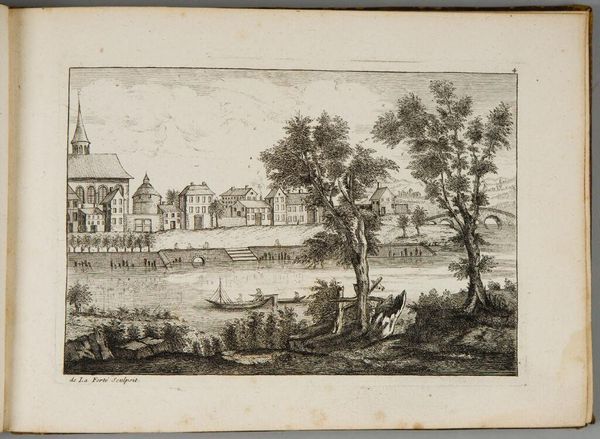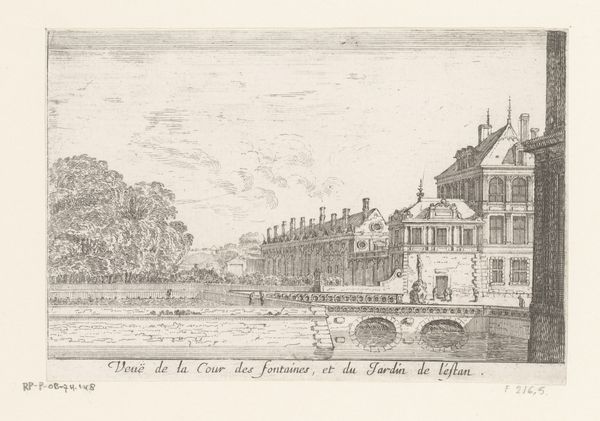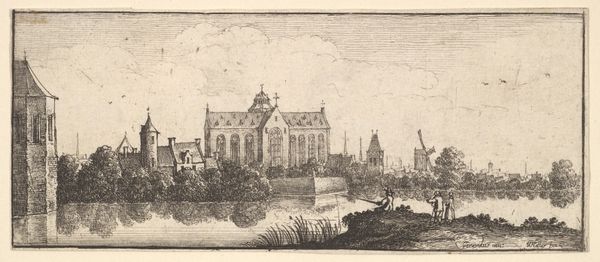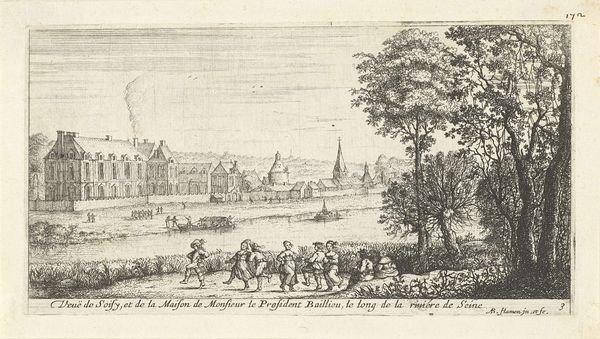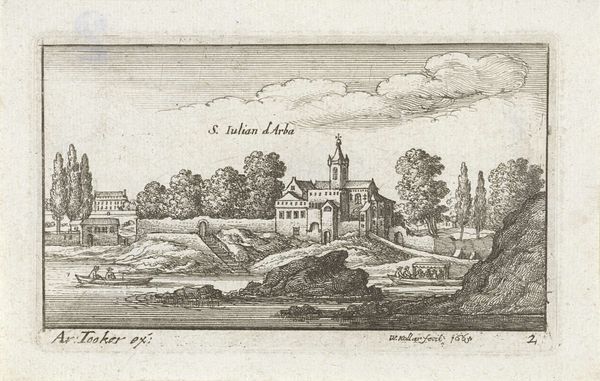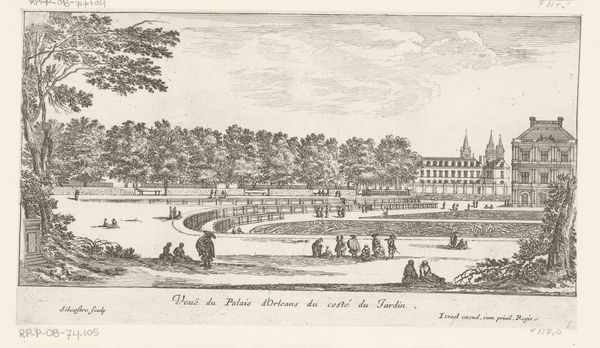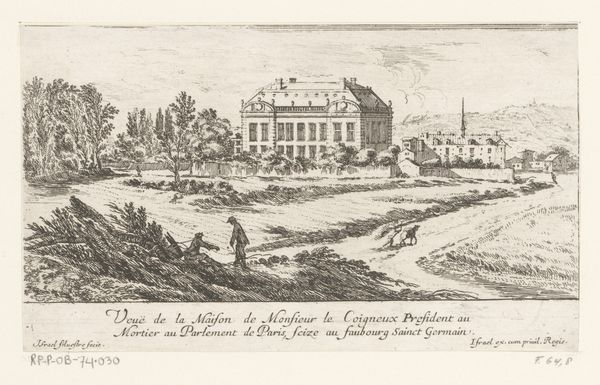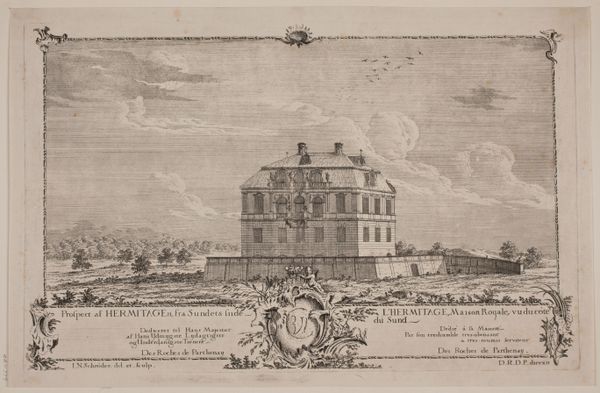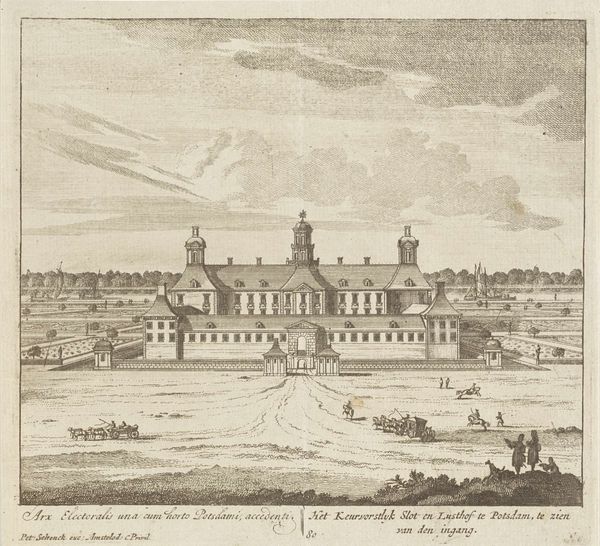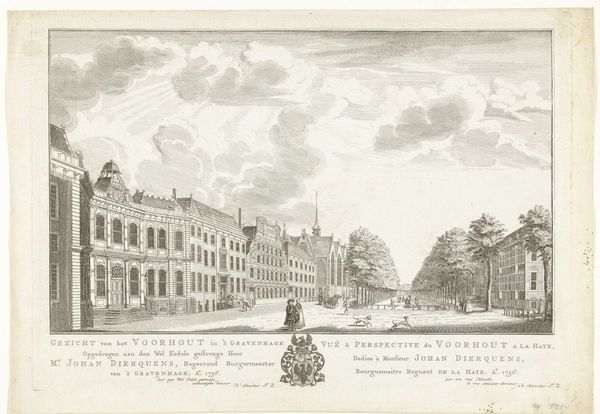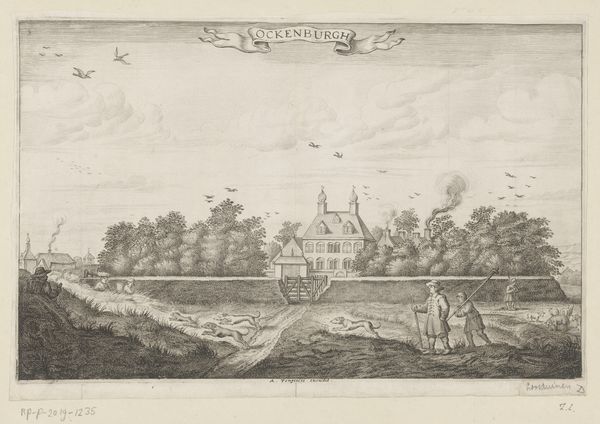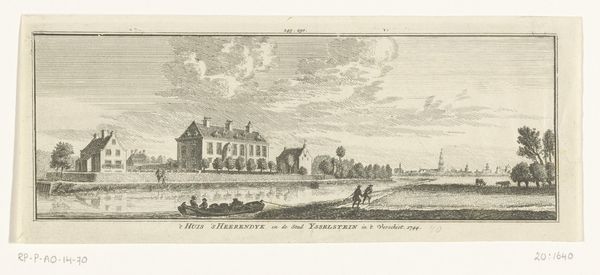
#
comic strip sketch
#
mechanical pen drawing
#
pen illustration
#
pen sketch
#
personal sketchbook
#
sketchwork
#
pen-ink sketch
#
pen work
#
sketchbook drawing
#
storyboard and sketchbook work
Dimensions: height 89 mm, width 169 mm
Copyright: Rijks Museum: Open Domain
This is Albert Flamen's "Landhuis bij Montrouge", an etching made sometime in the 17th century. Etching is an indirect printmaking technique, where the artist protects areas of a metal plate with a resist, and then immerses the plate in acid. The acid bites into the exposed metal, creating lines. The plate is then inked, and the ink held in the etched lines is transferred to paper under high pressure. This method is especially interesting because of how it reflects labor; it's a chemical process rather than a manual one, akin to industrial manufacturing. You might think of it as a proto-industrial technique. It allowed artists to make multiple copies efficiently, meeting the rising demand for images in early modern Europe. And, like any printed image, it became a commodity, circulated widely as both art and information. So, next time you look at an etching, think about the labor-saving power of acid, and the print's role in a burgeoning market economy.
Comments
No comments
Be the first to comment and join the conversation on the ultimate creative platform.
